Email Image Blocking: Answering the What, Why, Where, Who, and How
If you’re in email marketing, you’ve probably heard that you’re not supposed to send all-image emails. Lots of reasons have been given for this. Your email will go to spam. Your viewers won’t be able to see it. It’s bad for accessibility. All of those were good reasons. But as email has advanced, the landscape has changed. Let’s dive into how the changing landscape has impacted images in email and update some of our best practices for email image blocking in 2021 and beyond.
I’ll walk you through:
- What email image blocking is
- Why images are not displayed
- Where they’re off by default
- Who would block email images
- How to optimize for images off
What’s that?
Email image blocking is the practice where images are blocked from emails or not displayed by email clients or company servers. This results in images not showing up in emails, such as this one with almost no image ALT text:

Or this one with better image ALT text (still doesn’t look great, though, right?):
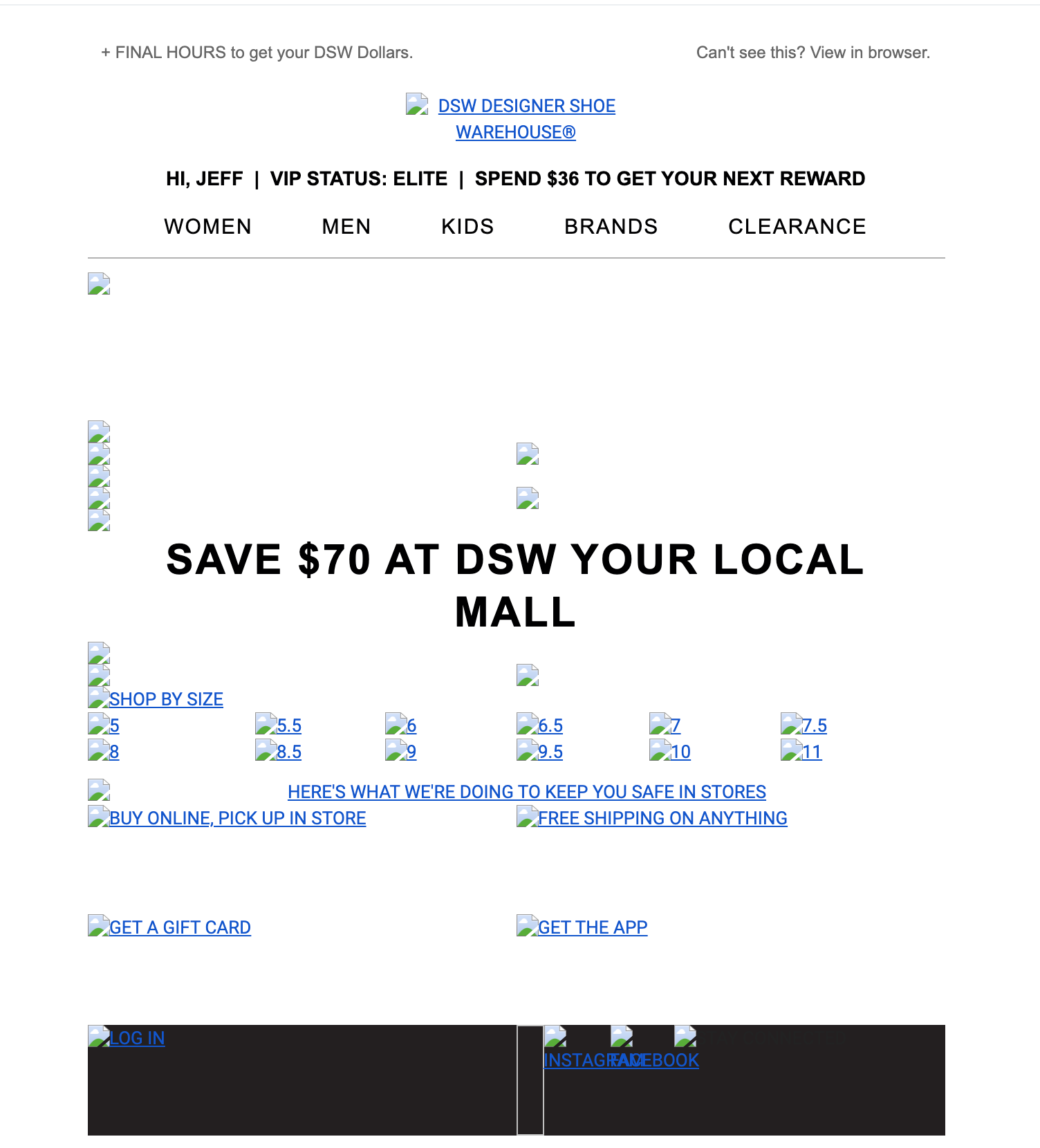
Why does it happen?
There are several reasons why email clients block images or turn them off by default. The biggest reason being security. Microsoft claims they block images to help their readers avoid viewing potentially offensive content as well as protect them from malicious code. They also offer the point that blocking the images by default allows people with lower bandwidths to choose if they want to use that bandwidth for image download or not.
For email clients that have images turned on by default, many of them use image proxy servers to host the images instead of having the images come directly from the external hosts. This allows for the email clients to check for viruses and malware before the images reach inboxes, decreasing the need for image blocking as a security feature.
The bandwidth argument would still be a good reason for image blocking to be turned on, but all mobile email clients we tested allow images by default. Subscribers have to really dig to figure out how to turn images off for their mobile devices. This makes it even more important for email marketers to make sure any images being used are optimized.
Where do email images get blocked?
In the past many email clients blocked images by default. These days, the biggest culprits are the Outlook desktop clients. Most other email clients, with the exception of AOL, show images by default.
Webmail Clients
| Email Client | Default Image Status | Renders ALT text | Renders styled ALT text |
| Gmail | on ✓ | yes ✓ | yes ✓ |
| AOL Mail | off ✘ | yes ✓ | yes* ✓ |
| Yahoo! Mail | on ✓ | no ✘ | no ✘ |
| Outlook.com | on ✓ | yes ✓ | yes ✓ |
| Office 365 | on ✓ | yes ✓ | yes ✓ |
*ALT text still has an underline.
Desktop Clients
| Email Client | Default Image Status | Renders ALT text | Renders styled ALT text |
| Outlook 2007-2019 | off* ✘ | yes** ✓ | no ✘ |
| Outlook (mac) | off* ✘ | yes ✓ | yes ✓ |
| Apple Mail | on ✓ | yes ✓ | yes ✓ |
| Office 365 | off ✘ | yes** ✓ | no ✘ |
| Office 365 (mac) | off ✘ | yes ✓ | yes ✓ |
| Windows 10 Mail | on ✓ | no ✘ | no ✘ |
*This was off as of Outlook 2016, but we weren’t able to test to see if this is still the case.
**This renders after the warning message and only if images are turned off. If an image is broken, the ALT text does not render.
Mobile Clients
| Email Client | Default Image Status | Renders ALT text | Renders styled ALT text |
| Gmail | on ✓ | yes ✓ | yes ✓ |
| AOL Mail | on ✓ | yes ✓ | yes ✓ |
| Yahoo! Mail | on ✓ | yes ✓ | yes ✓ |
| iPhone (iOS Mail) | on ✓ | yes ✓ | yes ✓ |
| Samsung Mail | on* ✓ | yes ✓ | yes ✓ |
| Outlook | on ✓ | yes ✓ | yes ✓ |
*This was on last time we checked, but we weren’t able to test to see if this is still the case.
So is an image-only email a death sentence for your email? According to Email Client Market Share, while Outlook is the 4th most popular email client, it only accounts for 6% of email opens. But as Outlook blocks images—and thus, the open tracking pixel—by default, we don’t know how accurate that is.
So there’s a chance you’ll be OK. But, as in all things email, it depends on who your audience is. If you have a higher than average amount of Outlook subscribers (if you’re B2B, there’s a good chance this is you), then you could be in trouble.
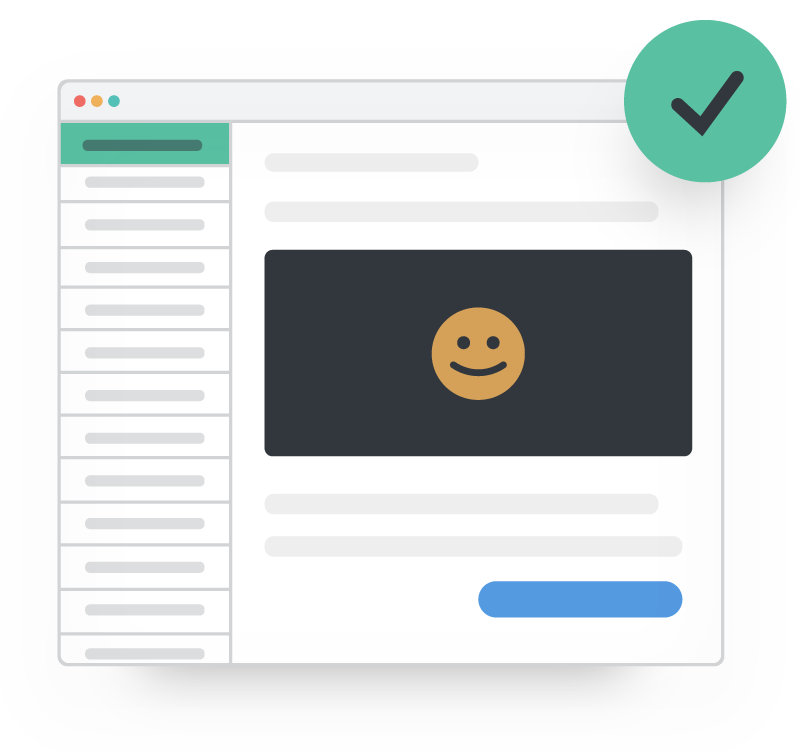 | No more broken emails Preview your emails across over 100 email clients, apps, and devices to ensure an on-brand, error-free subscriber experience—with and without images turned on. |
Who blocks their emails from loading images?
There’s no real way to tell how much of your audience is impacted by image blocking, as the open rates are measured by having an image pixel load. No image loading means no open is tracked.
According to our prior research from when Gmail first started turning images on by default in 2013, 43% of Gmail users used to view emails with images off. Is that indicative of what Outlook users do? It could be, but we have no way of knowing.
Since you can’t tell exactly how much of your audience is opening emails with images off, it’s best to create your emails with image blocking in mind to ensure the best experience for everyone.
How can you optimize emails for images off?
There are several ways you can code an email to provide a great experience even in clients where the images are blocked. We’ll dive into them here.
Use live HTML as much as possible
The best way to code emails to ensure maximum accessibility is to code emails with live HTML. That means not putting text (especially key information) in an image. Have buttons and text be coded using HTML instead of created as a graphic. Use images for images specifically.
Live text
Keep your text in paragraph and header tags. Brand styles are important, but not more important than thinking about your subscriber’s experience.
Magic Spoon does a great job of having their images contain proper ALT text, but it would be very simple to have those as live text in a <p> tag for a much more impactful no-images version such as what Ace Hardware did:
| Magic Spoon email with images off | Ace Hardware email with images off |
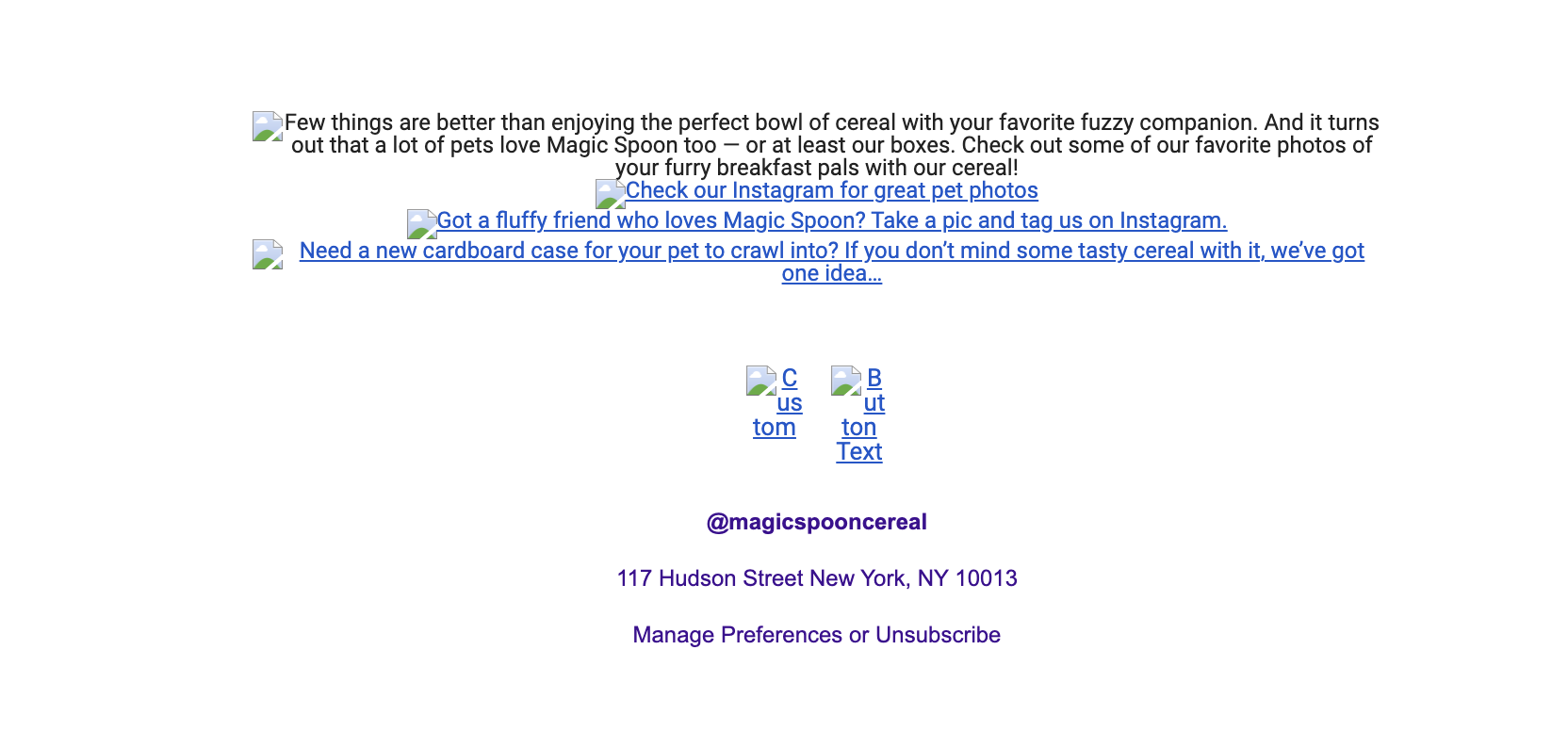
| 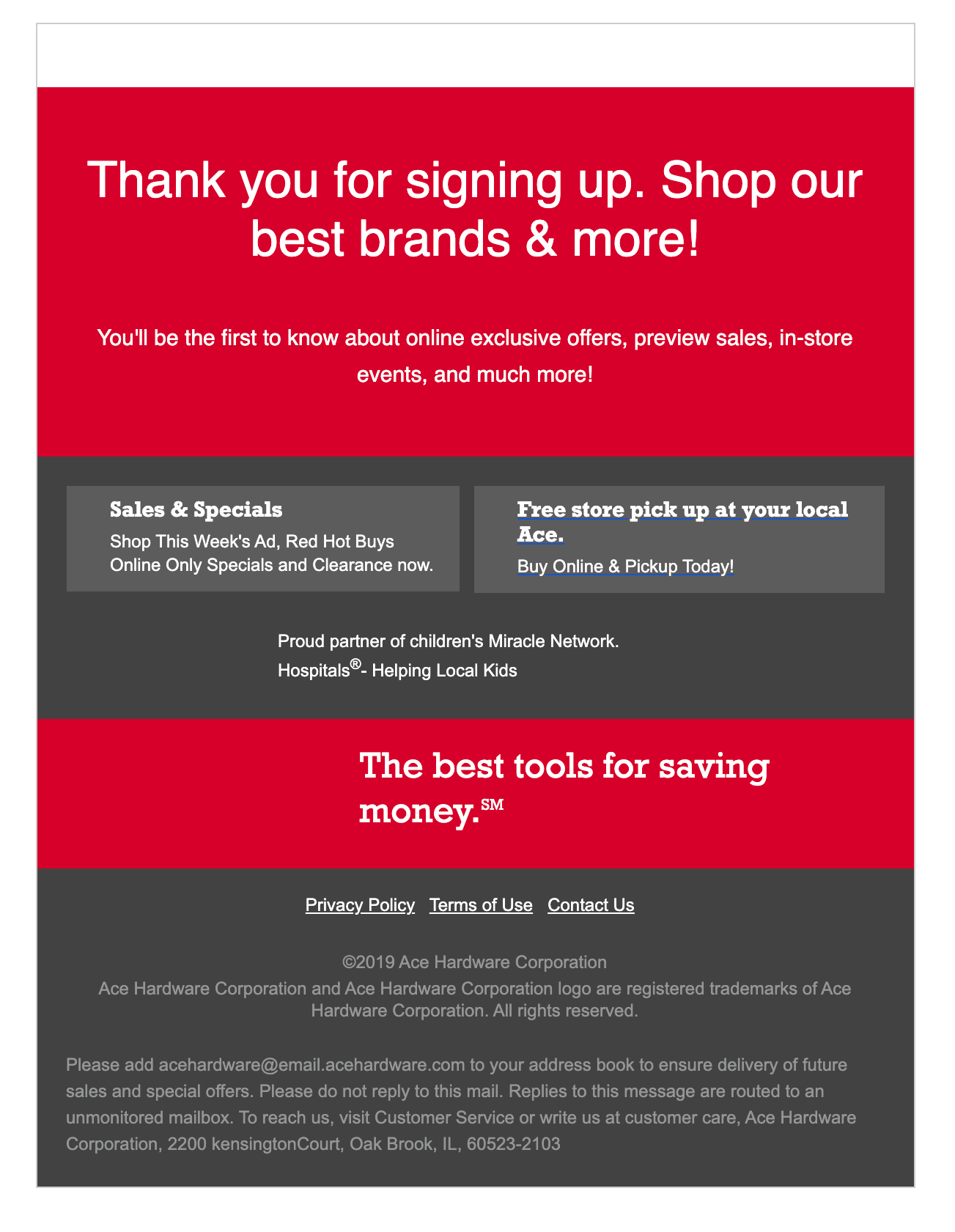
|
I hope they at least have alt text. I can't imagine this taking more than 1-2 hours 2 code 2 improve accessibility. And you know my stance… If you're only doing baked-in text for branding reasons, you care more about your font than you do about your subscribers with limitations
— Anne Tomlin (@pompeii79) August 3, 2021
Bulletproof buttons
Using live text in calls to action (CTAs) is imperative. As the main driver for your email, you want to ensure your CTAs show up no matter what experience your subscribers are using. Use a bulletproof button to accomplish this and make sure your CTAs always show up:
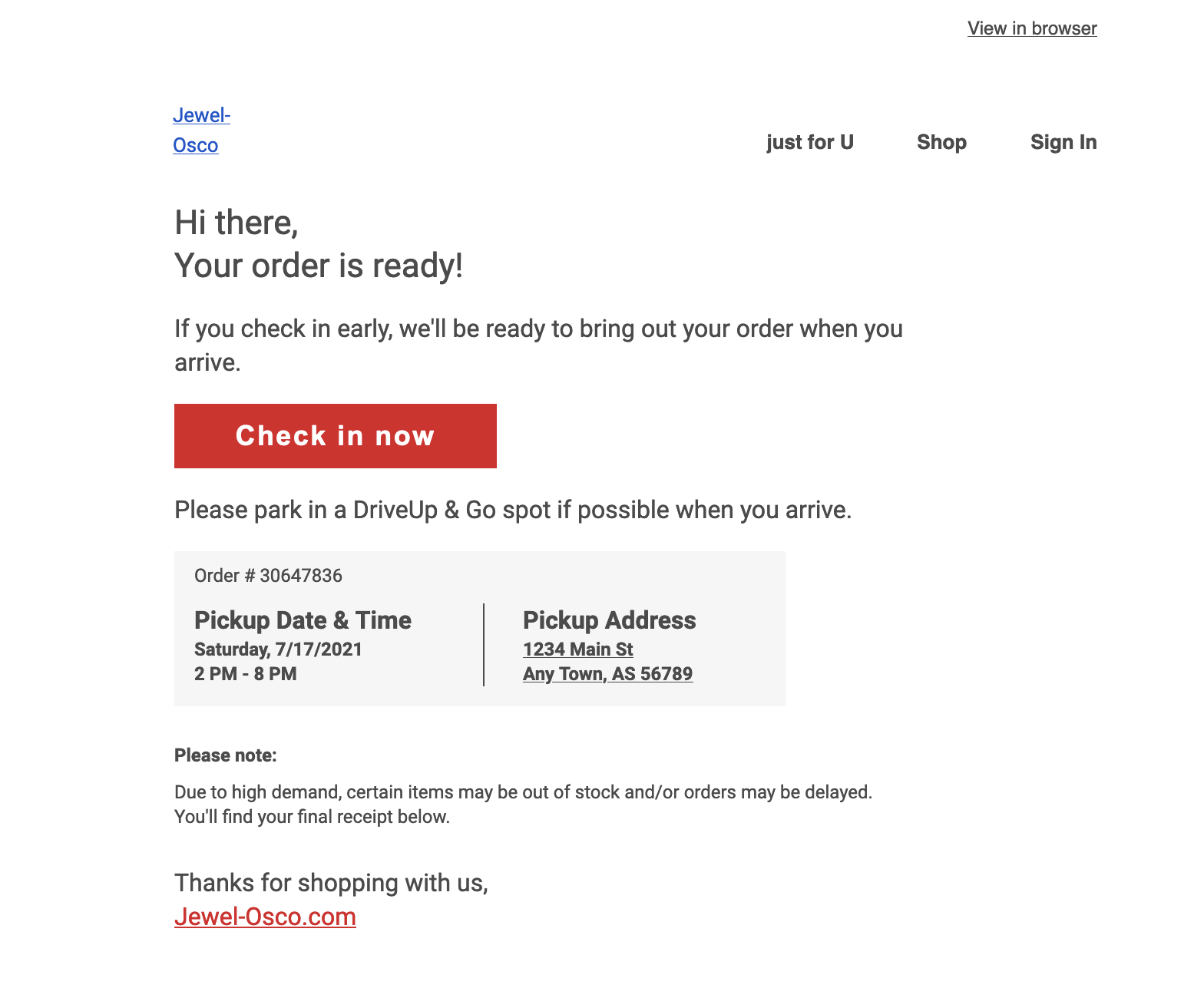
Background images
Don’t trap text in your images. But that doesn’t mean you can’t have a beautiful design. To get the best of both worlds, use a background image with live text on top. This ensures your message comes across even when images are turned off.
And include background colors with the background images to make sure your email is still intriguing and on-brand (you don’t want giant white space—unless that’s the look you’re going for). Just make sure to style your ALT text so it shows up on the background color fallback and doesn’t get lost. Like this example:
| Images on | Images off |
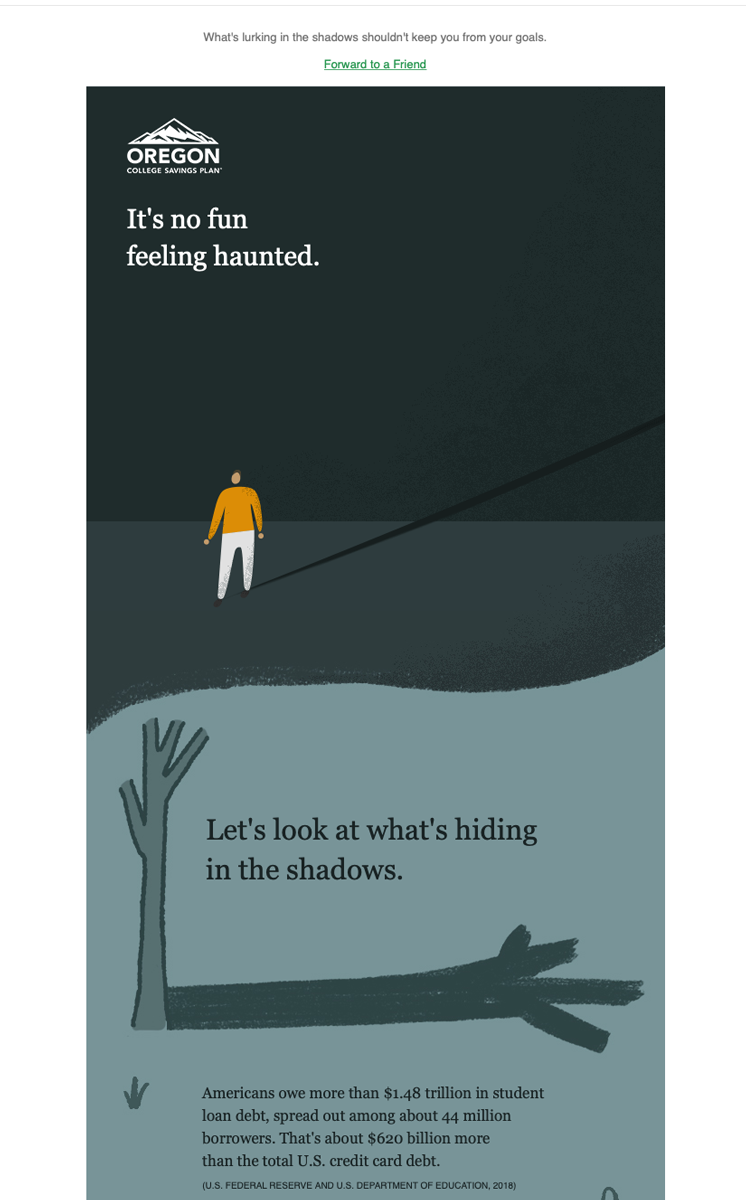
| 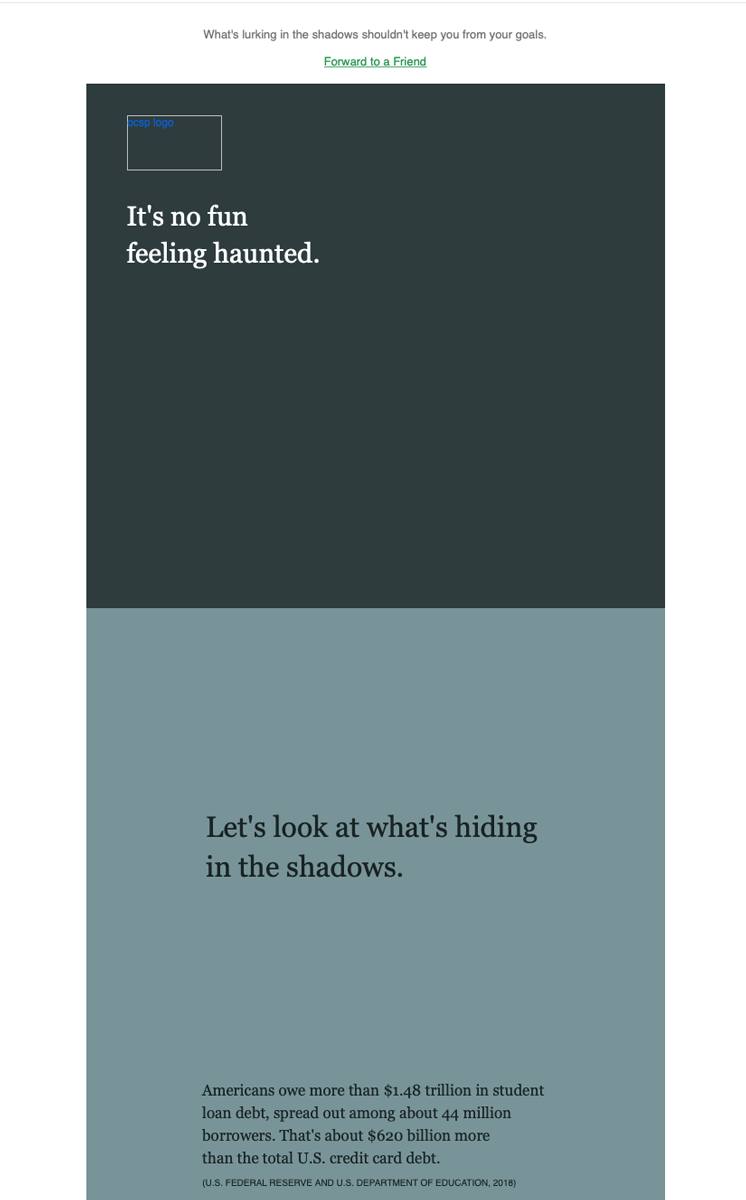
|
Live coding emails can be trickier than “plopping an image in,” but when your email is coded, making changes to the text is so much easier and quicker than making changes to an image and having to re-upload it. With all the tools out these days (such as Litmus’ Visual Editor), it’s easier than ever to create an email without using images only.
Use ALT text or stylized ALT text
ALT text is the text that shows up when images aren’t displayed or is read aloud when your subscriber is using a screen reader. As shown in the support table earlier, ALT text is supported almost everywhere. And in some places, you can even style the ALT text so it looks similar to the actual text in your images.
Using ALT text helps people with image blocking turned on (and those using screen readers) know what is in the images. I know I often have trouble coming up with what to write for ALT text for images, so here are four helpful tips.
ALT text doesn’t need to be dry.
Add emotion to your ALT text descriptions to help liven up your images. For example, look at this image:

Instead of just “Taylor Davis’ Headshot,” use “Taylor Davis, caught laughing out loud in an unexpected moment.”
Keep in mind the context of your images.
Yes, be descriptive, but context is key. Let’s look at this image, for example:
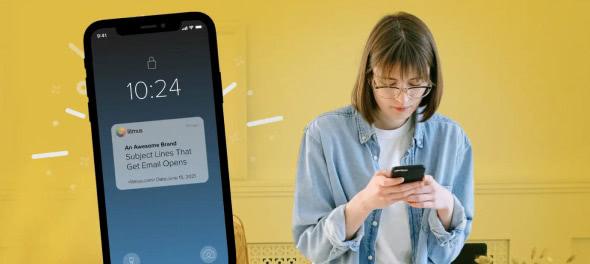
“Person looking at their phone and then a closeup of the screen showing a notification for an email” is a decent ALT text. But if the article is about subject line tips, then “a popup alert showing a compelling subject line” is a more relevant and helpful ALT text.
Leave ALT text blank for decorative images.
Image-based bullet points or horizontal rules don’t need ALT text. If the image is purely decorative, not functional, then adding ALT text would only distract readers from your message.
Don’t tell people to download images.
I used to think something like this was genius because downloaded images meant getting open data:

This seems like a fun and clever way to get people to download images, but anyone with a screen reader may feel left out. ALT text should be used to improve all of your subscribers’ experiences.
How to code ALT text
Adding ALT text to images is as easy as adding the ALT attribute to your image tag:
<img src=”https://www.example.com/image.jpg” alt=”a fun example image” width=”600” height=”300” style=”max-width: 600px; width: 100%; height: auto;”>
Stylized ALT text is good for images that you need to have the text in, such as logos:
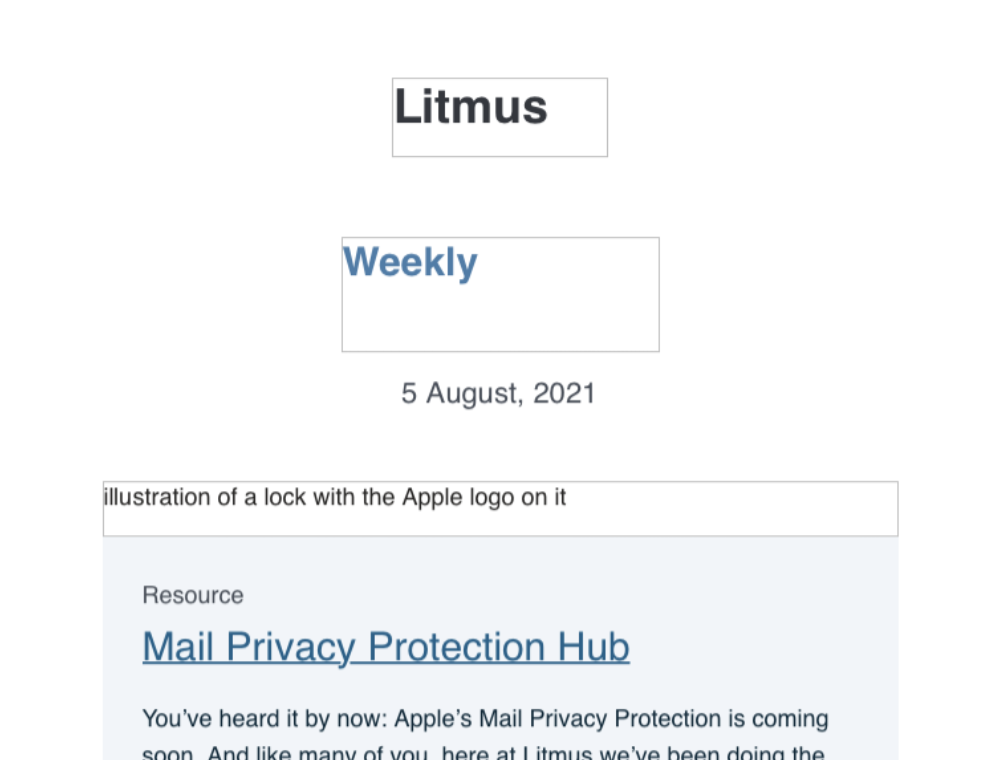
To stylize your ALT text, add the styles to the image style attribute:
<img src=”https://www.example.com/logo.jpg” alt=”Your Company Name” width=”600” height=”300” style=”max-width: 600px; width: 100%; height: auto; color: #427DAA; font-size: 36px; line-height: 40px;”>
You can add font sizes, font families, colors, and even background colors to your ALT text, like this example:
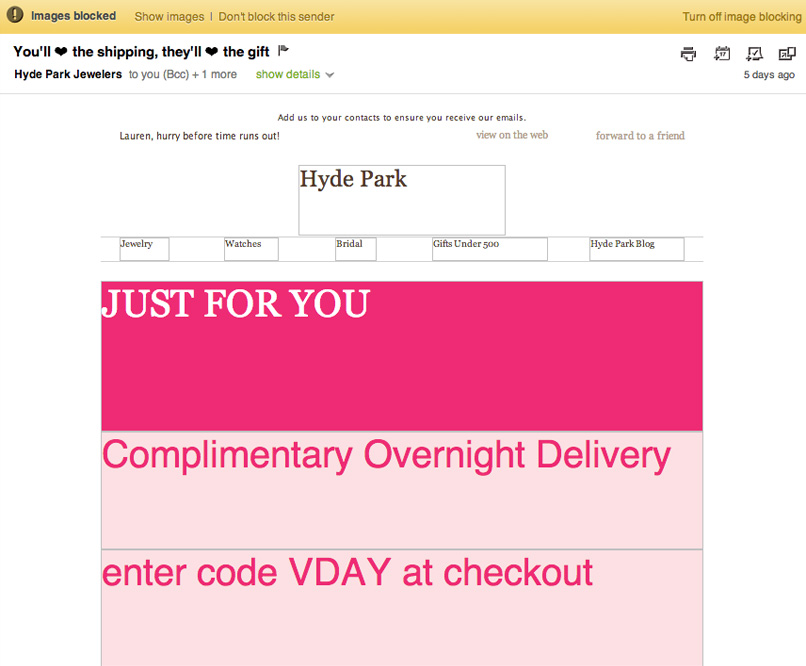
Mosaic pixel art
In the past, email marketers have used stylized ALT text and nested tables to create interesting mosaics or ASCII emoji art for the image-off version of an email.
While this looks cool, the point of the ALT text isn’t to look cool. It’s to help inform subscribers who won’t be viewing email with images on—either because of image blocking or because they’re using a screen reader.
Going forward: a better experience for everyone
With images being downloaded by default in more and more email clients these days, image blocking may seem like a thing of the past. But with no real way to know exactly how many of your subscribers are opening your emails without images turned on, it’s a good idea to make sure your emails look great no matter what preferences your subscribers have.
 | Optimize your emails with Litmus Make sure to test your emails in Litmus Builder in the images-off mode to see how your emails look, and ensure they’re optimized for all experiences. |
Originally published on October 3, 2017, by Lauren Smith. Last updated August 17, 2021.

Carin Slater
Carin Slater is the Email and Content Growth Marketing Manager at Litmus
